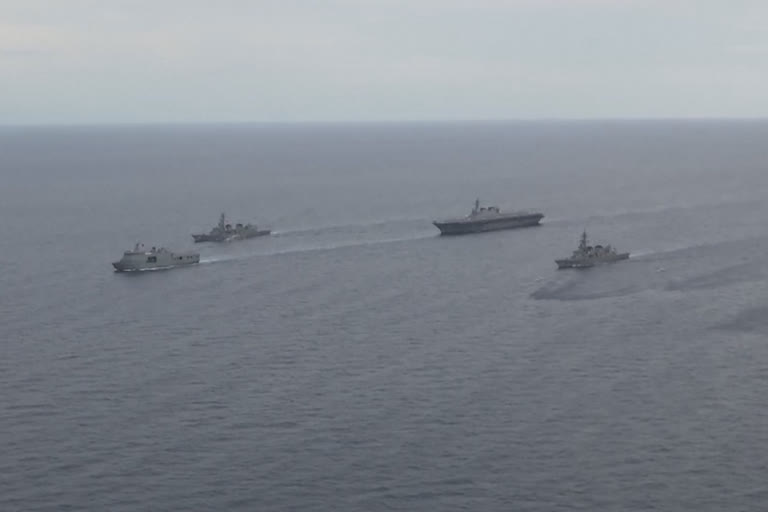Tokyo: One of Japan's largest warships, the helicopter carrier Izumo, is returning home from Subic port in the Philippines following a powerful show of Tokyo's determination to expand its military presence and counter China's forays into strategic waters.
Subic, a former US naval base, was the Izumo's final stop in a two-month deployment in the Indo-Pacific region at a time of prolonged tensions over maritime territory.
The carrier, along with the destroyers Murasame and Akebono, just finished a series of drills with the United States and other countries.
Japan's warship Izumo returns home Island nation Japan's ability to project military power beyond its borders is severely constrained by the commitment to pacifism and rejection of use of military force in conflict enshrined in its post-World War II constitution, though in 2015 it was reinterpreted to allow the use of force in defending itself and its allies.
But the Izumo's mission offers a glimpse of where its military is headed: For the first time, troops from a newly formed amphibious brigade of the Ground Self Defense Force participated in an extended naval deployment.
Also Read: Dalai Lama apologises for 'attractive woman successor' remark
Japan is preparing to reconfigure the Izumo to accommodate US stealth fighters, including F-35Bs, after announcing it would purchase 42 of its own.
Capt. Katsuyoshi Motoyama, the Izumo's commanding officer, said the plan for Izumo requires research into many area.
The aircraft are designed to operate with short takeoffs and vertical landings, such as on carriers.
The purchase underscores Japan's growing role in its post-war alliance with the US.
Yasukazu Tanaka of the Amphibious Rapid Deployment Brigade, similar to the US Marines, said the recent exercises were meant to deepen coordination between them and ground troops to facilitate use of the carrier for transporting troops to front lines in the future.
Since the Izumo can accommodate both air and sea transport, Yasukazu believed there are great possibilities for amphibious operations, though he and all others involved emphasized that the ground and marine troops conducted no joint exercises.
Ground troops are still exploring how best to operate on longer missions, where regulations limit use of live-fire weapons on board.
Troops practiced emergency first aid response and trained on the flight deck and in the aircraft carrier hangar deck, at times using guns made of rubber in battle scenarios.
China has been expanding its military presence to press home its determination to defend its claim to virtually the entire South China Sea in the face of challenges by the US and its allies, unnerving many in the region.
During its five-day voyage from Brunei to the Philippines, Izumo skirted near the so-called "nine-dash line" marking China's territorial claims while conducting its last few exercises with navies from Brunei and the Philippines.
Japan's navy also hosted a training programme for young representatives from Southeast Asian nations, with lectures on international maritime law, humanitarian and disaster relief programs, and exercises in navigation and communications.
